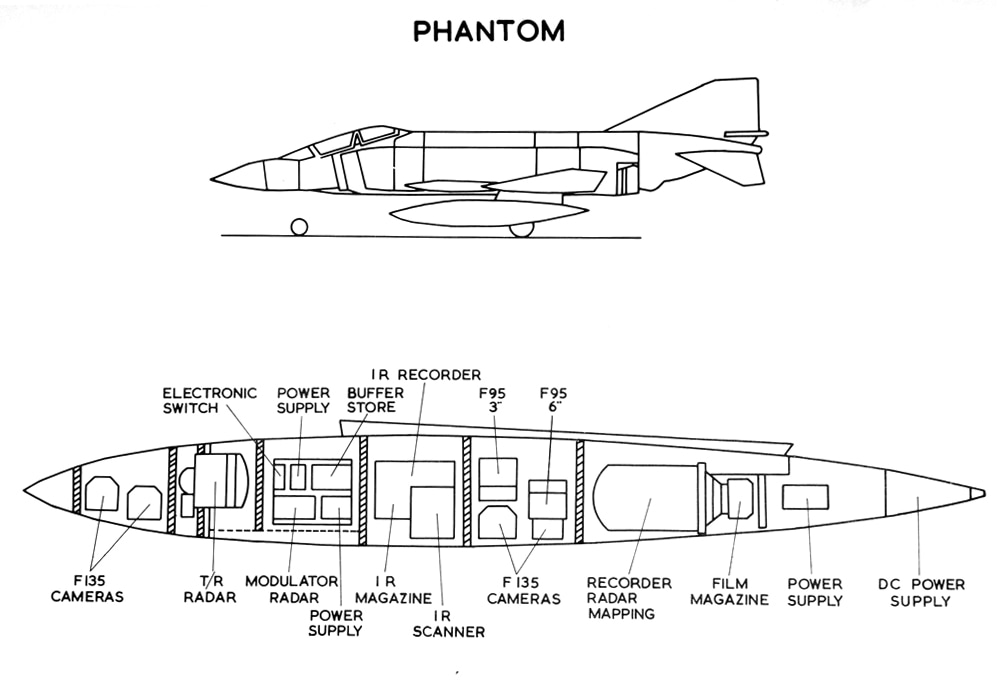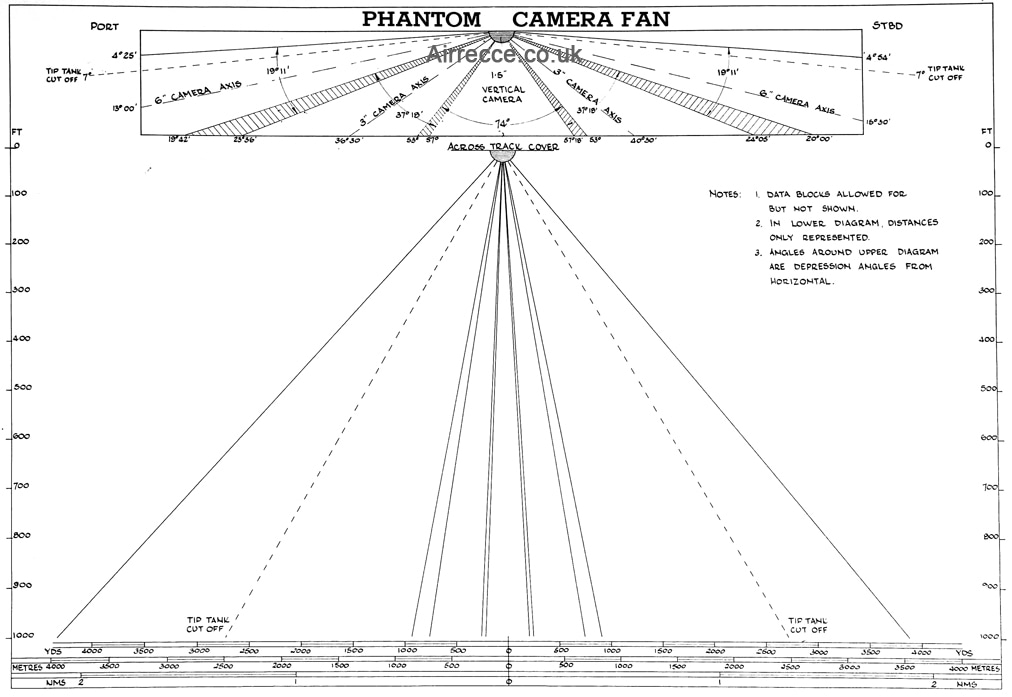Association blog
|
The following information has been collated from: www.spyflight.co.uk/ and www.airrecce.co.uk/ together with assistance from Ray Dunn. In 1964 the Labour government of Harold Wilson cancelled the P1154 and TSR-2 programmes, leaving the RAF without obvious replacements for the Hunter and Canberra in the fighter, ground attack and reconnaissance roles. The RAF eventually decided to follow the Royal Navy's decision to purchase the McDonnell Douglas F-4 and in Feb 65 placed an order for 118 F-4's to take over the roles of the Hunter and Canberra. In RAF service the Phantom was known as the FGR2, with the initials standing for Fighter, Ground Attack and Reconnaissance. Unlike the USAF and US Marines, the RAF did not obtain Phantoms that was solely for photographic reconnaissance, the RF-4 series. The F-4 OCU at Coningsby was formed in Aug 1968 and the initial output of graduates formed the ground attack squadrons in Germany and UK. The first dedicated F-4 reconnaissance squadron to form was 2 Sqn based at Laarbruch in Germany which stood up in Dec 70. This was followed by 41 Sqn at Coningsby which formed in Apr 72. Only some thirty F-4's were specially wired to carry the EMI reconnaissance pod and these aircraft equipped 2 and 41 squadrons. The pod was pressurised and mounted on the aircrafts centre-line position, looking like a 500 gal external fuel tank, it had a fat bottom and an air scoop on each side of the pods forward nose section. Using a considerable amount of technology originally developed for the TSR2 reconnaissance systems, EMI eventually created the biggest, most capable and most expensive reconnaissance pod of the 1960s.  Starting at the front the pod was fitted with the following equipment, two AGI F.135 cameras, a Texas Instrument RS700 infar-red linescan (ILRS) sensor, four F.95 cameras in the oblique position, these could replaced with another split pair of F.135 cameras for night tasking. All of the F-135's were vertical facing. When in the 'Night-Flashing' mode, four F-135's were used, three of them were arranged in a split-pair 'fan', the fourth camera was used as a timer unit to synchronise with the electronic flash unit in the port Sargent Fletcher tank. Along each side of the pod were the 15 ft slotted waveguide aerials for the MEL/EMI Q-band Sideways Looking Reconnaissance Radar (SLRR). This scope of reconnaissance equipment fitted gave a horizon-to-horizon coverage, however, there was a loss of 4½° on each horizon due to the external fuel tanks mounted under the aircrafts wings. For special tasks, a F126 vertical camera and an F95 oblique camera with a 12in focal lens could also be fitted. The only 'forward-facing' camera used was an F-95 in the 'Strike-pod' which was fitted to the port forward sparrow position. It had a depression angle of 20° from the horizontal.  The exposure rate of each camera could be selected to run at 4, 6, 8, or 12 frames per second, though normal settings were either 8 or 12 depending on what height the aircraft was flying. The IRLS could cover an area of three times the aircrafts height. When using the SLLR the aircraft had to fly straight and level as the system was not roll stabilised. The system could cover an area of five miles when the aircraft was operating at normal low-level height, this increased to ten miles when flying at 6,000ft, however, there was a degradation of image quality. The Jaguar used a new build EMI recce pod when it took over the role of tactical reconnaissance from the FGR2 in 1976. The Jaguar pod featured a different mark of F-95 camera (Mark 10), and used a different IRLS, 70mm rather than the 5'' format used on the Phantom EMI Pod.
8 Comments
Ray Dunn
11/5/2017 12:49:22
The forward F-135 Cameras were not 'forward facing', all the F-135's were vertical facing. When in the 'Night-Flashing' mode, four F-135's were used, three of them were arranged in a split-pair 'fan', the fourth camera was used as a timer unit to synchronise with the electronic flash unit in the port Sargent Fletcher tank.
Reply
Military Secretary
11/5/2017 13:27:38
Good afternoon Ray, thank you for the correction. I will see that the blog entry is updated.
Reply
Tony French
26/2/2021 10:40:31
The Infra-red sensor from the Phantom pod went on to be used in the RAF Canberras based at RAF Wyton
Reply
16/6/2018 11:44:51
Hi my name is Stephanie Lawton, I work as an unpaid volunteer Exhibition Officer at the Solway Aviation Museum, Carlisle, Cumbria (Registered Charity)
Reply
Website Admin
20/6/2018 19:49:15
Absolutely, please do. We wish you all the best for the exhibit.
Reply
2/8/2018 17:35:00
I am looking for drawings of the EMI pod to do some scale drawings if anyone has anything?
Reply
Webmaster
5/8/2018 19:40:10
Good evening,
Reply
Leave a Reply. |
Photo Credit:
Rich Cooper/COAP Association BlogUpdates and news direct from the Committee Archives
August 2022
Categories
All
|
